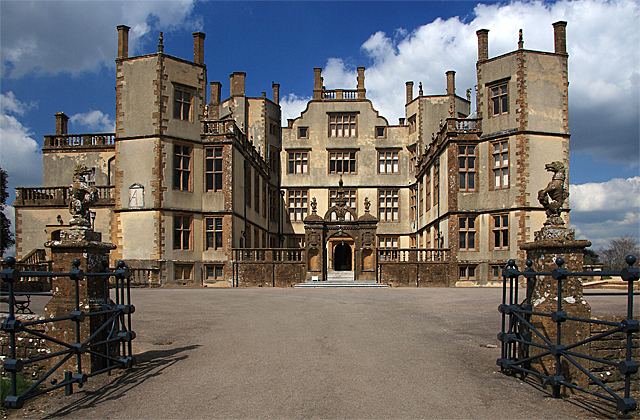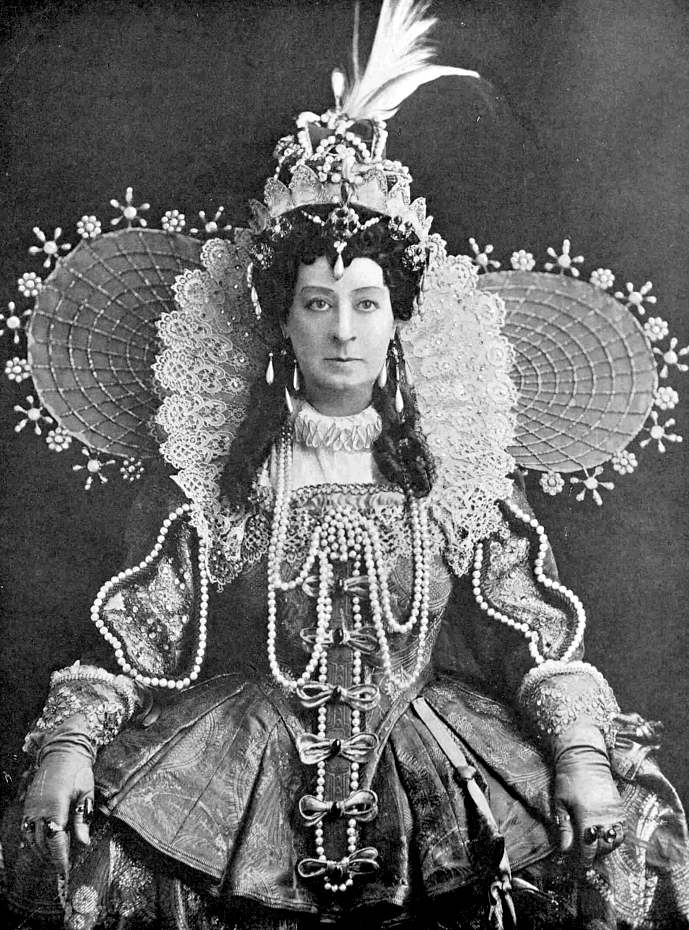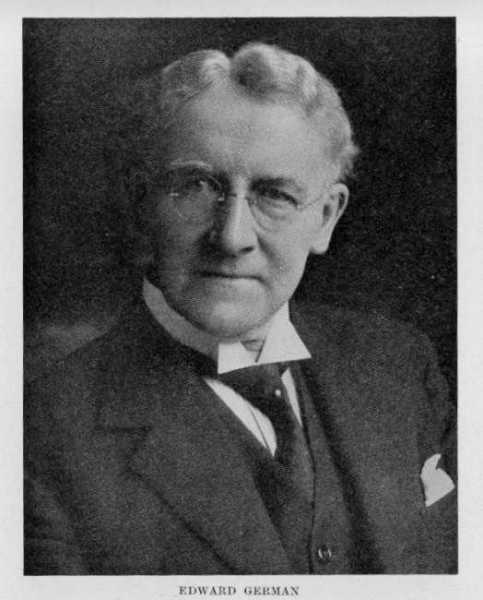|
Elizabeth Throckmorton
Elizabeth, Lady Raleigh (''née'' Throckmorton; 16 April 1565 – c. 1647), was an English courtier, a Gentlewoman of the Privy Chamber to Queen Elizabeth I of England. Her secret marriage to Sir Walter Raleigh precipitated a long period of royal disfavour for both her and her husband. Life Elizabeth, known also as "Bess", was the daughter of the diplomat Sir Nicholas Throckmorton and Anne Carew. Her father, Nicholas, was the nephew of Sir Thomas Parr making him a cousin to the late Queen, Catherine Parr, the sixth wife of King Henry VIII, to whom he served in her household. Her mother, Anne, was the daughter of Elizabeth Bryan who is reputed to have been a mistress of King Henry. That made Anne a niece of Sir Francis Bryan who had been a close confidant to King Henry. Both Elizabeth and Francis had been a first half-cousin of both Queen consorts Anne Boleyn and Catherine Howard and a second half-cousin of Jane Seymour, so Bess was well connected at court. Bess and her ... [...More Info...] [...Related Items...] OR: [Wikipedia] [Google] [Baidu] |
Walter Raleigh
Sir Walter Raleigh (; – 29 October 1618) was an English statesman, soldier, writer and explorer. One of the most notable figures of the Elizabethan era, he played a leading part in English colonisation of North America, suppressed rebellion in Ireland, helped defend England against the Spanish Armada and held political positions under Elizabeth I. Raleigh was born to a landed gentry family of Protestant faith in Devon, the son of Walter Raleigh and Catherine Champernowne. He was the younger half-brother of Sir Humphrey Gilbert and a cousin of Sir Richard Grenville. Little is known of his early life, though in his late teens he spent some time in France taking part in the religious civil wars. In his 20s he took part in the suppression of rebellion in the colonisation of Ireland; he also participated in the siege of Smerwick. Later, he became a landlord of property in Ireland and mayor of Youghal in east Munster, where his house still stands in Myrtle Grove. He rose ... [...More Info...] [...Related Items...] OR: [Wikipedia] [Google] [Baidu] |
Sherborne Castle
Sherborne Castle (sometimes called Sherborne New Castle) is a 16th-century Tudor mansion southeast of Sherborne Sherborne is a market town and civil parishes in England, civil parish in north west Dorset, in South West England. It is sited on the River Yeo (South Somerset), River Yeo, on the edge of the Blackmore Vale, east of Yeovil. The parish include ... in Dorset, England, within the parish of Castleton, Dorset, Castleton. Originally built by Sir Walter Raleigh as Sherborne Lodge, and extended in the 1620s, it stands in a park which formed a small part of the Baron Digby, Digby estate. Within the grounds lie the ruins of the 12th-century Sherborne Old Castle, now in the care of English Heritage. Origins The building now known as Sherborne Old Castle () was constructed in the 12th century as the fortified palace of Roger de Caen, Bishop of Salisbury and Chancellor of England. In the early 1140s, the castle was captured by Robert, 1st Earl of Gloucester, Robert Earl o ... [...More Info...] [...Related Items...] OR: [Wikipedia] [Google] [Baidu] |
Merrie England (opera)
''Merrie England'' is an English comic opera in two acts by Edward German to a libretto by Basil Hood. The patriotic story concerns love and rivalries at the court of Elizabeth I of England, Queen Elizabeth I, when a love letter sent by Sir Walter Raleigh to one of Queen Elizabeth's ladies-in-waiting, Elizabeth Raleigh, Bessie Throckmorton, ends up in the hands of the Queen. Well-known songs from the opera include "O Peaceful England", "The Yeomen of England" and "Dan Cupid hath a Garden". The piece played at the Savoy Theatre in London in 1902–1903. It has been revived many times, both professionally and by amateur operatic groups. There have been complete recordings of the score and several issues of recorded excerpts. Background and original production Basil Hood's libretto makes heavy use of wordplay for comic (and dramatic) effect. For example, the homophones 'fore' and 'four' are used in a scene in the second act where it is explained that a dragon has "four legs, ... [...More Info...] [...Related Items...] OR: [Wikipedia] [Google] [Baidu] |
Edward German
Sir Edward German (born German Edward Jones; 17 February 1862 – 11 November 1936) was an English musician and composer of Welsh descent, best remembered for his extensive output of incidental music for the stage and as a successor to Arthur Sullivan in the field of English comic opera. Some of his light operas, especially '' Merrie England'', are still performed. As a youth, German played the violin and led the town orchestra of Whitchurch, Shropshire. He also began to compose music. While performing and teaching violin at the Royal Academy of Music, German began to build a career as a composer in the mid-1880s, writing serious music as well as light opera. In 1888, he became music director of the Globe Theatre in London. He provided popular incidental music for many productions at the Globe and other London theatres, including ''Richard III'' (1889), ''Henry VIII'' (1892) and ''Nell Gwynn'' (1900). He also wrote symphonies, orchestral suites, symphonic poems and other works. ... [...More Info...] [...Related Items...] OR: [Wikipedia] [Google] [Baidu] |
Nicholas Carew (courtier)
Sir Nicholas Carew Order of the Garter, KG ( – 3 March 1539), of Beddington in Surrey, was an English courtier and diplomat during the reign of King Henry VIII of England, Henry VIII. He was executed for his alleged part in the Exeter Conspiracy. Early career Nicholas Carew was the son of Sir Richard Carew, Captain of Calais (1469 – May 23, 1520) and Malyn Oxenbridge, the daughter of Sir Robert Oxenbridge (1414 – 1486) of Brede, East Sussex, Brede, Sussex. When he was six years of age, he was placed in the household of the future King Henry VIII of England, and shared Henry's education. In the early years of Henry's reign, Carew came to prominence at court through his skill at jousting, and was renowned for his fearlessness. By 1515, Carew's fame in the lists was such that the King provided him with his own tiltyard at Palace of Placentia, Greenwich. He was Knight Bachelor, knighted sometime before 1517. He was a prominent member of the Court and held the position of Ma ... [...More Info...] [...Related Items...] OR: [Wikipedia] [Google] [Baidu] |
St Margaret's, Westminster
The Church of St Margaret, Westminster Abbey is in the grounds of Westminster Abbey on Parliament Square, London, England. It is dedicated to Margaret the Virgin, Margaret of Antioch, and forms part of a single World Heritage Site with the Palace of Westminster and Westminster Abbey. History and description The church was founded in the twelfth century by Order of Saint Benedict, Benedictine monks, so that local people who lived in the area around the Abbey could worship separately at their own simpler parish church, and historically it was within the hundred of Ossulstone in the county of Middlesex. In 1914, in a preface to ''Memorials of St. Margaret's Church, Westminster'', a former Rector of St Margaret's, Hensley Henson, reported a mediaeval tradition that the church was as old as Westminster Abbey, owing its origins to the same royal saint, and that "The two churches, conventual and parochial, have stood side by side for more than eight centuries – not, of course, the e ... [...More Info...] [...Related Items...] OR: [Wikipedia] [Google] [Baidu] |
Church Of St Peter Ad Vincula
The Chapel Royal of St Peter ad Vincula ("St Peter in chains") is a Chapel Royal and the former parish church of the Tower of London. The chapel's name refers to the story of Saint Peter's imprisonment under Herod Agrippa in Jerusalem. Situated within the Tower's Inner Ward, its current building dates from 1520, although the church was likely established in the 12th century. This church for working residents was the second chapel established in the Tower after St John's, a smaller royal chapel built into the 11th century White Tower. A royal peculiar, under the jurisdiction of the monarch, the priest responsible for these chapels is the chaplain of the Tower, a canon and member of the Ecclesiastical Household. The canonry was abolished in 1685 but reinstated in 2012. At St Peter's west end is a short tower, surmounted by a lantern bell-cote, and inside the church is a nave and shorter north aisle, lit by windows with cusped lights but no tracery, a typical Tudor desig ... [...More Info...] [...Related Items...] OR: [Wikipedia] [Google] [Baidu] |
Carew Raleigh
:''This article concerns Sir Walter Raleigh's brother. For his namesake and nephew, Sir Walter's son, see Carew Raleigh (1605–1666)'' Sir Carew Raleigh or Ralegh (ca. 1550ca. 1625) was an English naval commander and politician who sat in the House of Commons The House of Commons is the name for the elected lower house of the Bicameralism, bicameral parliaments of the United Kingdom and Canada. In both of these countries, the Commons holds much more legislative power than the nominally upper house of ... at various times between 1586 and 1622. He was the elder brother of Sir Walter Raleigh. Biography Raleigh was born in Fardel, Devon, the son of Walter Raleigh and Catherine Champernowne. He was gentleman of the horse to John Thynne of Longleat for some time before Thynne's death in 1580. In 1578, Raleigh served on the expedition led by his half-brother, Sir Humphrey Gilbert. On his marriage, he sold his property in Devon, and settled at Downton House, near Salisbury. ... [...More Info...] [...Related Items...] OR: [Wikipedia] [Google] [Baidu] |
Robert Crosse (MP)
Robert Crosse (died 1611), was an English politician. Crosse was a member (MP) of the Parliament of England for Minehead in 1586, Yarmouth, Isle of Wight in 1593 and Saltash in 1601. After the Union of the Crowns in 1603, many courtiers travelled to Northamptonshire at this time to greet the queen and her children, seeking royal favour. Lord Buckhurst wrote on 21 June 1603 that he and the Lord Keeper Thomas Egerton were travelling "to do our duties to the Queen, the Prince, and Princess, all the world flying beforehand to see her". Robert Crosse complained that Elizabeth Raleigh Elizabeth, Lady Raleigh (''née'' Throckmorton; 16 April 1565 – c. 1647), was an English courtier, a Gentlewoman of the Privy Chamber to Queen Elizabeth I of England. Her secret marriage to Sir Walter Raleigh precipitated a long period of ... had persuaded him to make an "idle journey" to meet the queen and she had received "but idle graces".''HMC Salisbury Hatfield'', vol. 20 (London, 1930 ... [...More Info...] [...Related Items...] OR: [Wikipedia] [Google] [Baidu] |
Thomas Egerton, 1st Viscount Brackley
Thomas Egerton, 1st Viscount Brackley, (c. 1540 – 15 March 1617), known as Lord Ellesmere or Lord Egert from 1603 to 1616, was an English Peerage of England, nobleman, judge and Politician, statesman from the Egerton family who served as Lord Keeper of the Great Seal, Lord Keeper and Lord Chancellor for twenty-one years. Early life, education and legal career Thomas Egerton was born in 1540 in the parish of Dodleston, Cheshire, England. He was the illegitimate son of Sir Richard Egerton and an unmarried woman named Alice Sparks from Bickerton, Cheshire, Bickerton. He was acknowledged by his father's family, who paid for his education. He studied Liberal Arts at Brasenose College, University of Oxford, Oxford, and received a bachelor's degree in 1559. He then studied common law, law at Lincoln's Inn and was called as a barrister by 1572. He was a Roman Catholic, until a point in 1570 when his non-conformity with the Church of England became an issue with his Inn passing on a ... [...More Info...] [...Related Items...] OR: [Wikipedia] [Google] [Baidu] |
Lord Keeper Of The Great Seal
The Lord Keeper of the Great Seal of England, and later of Great Britain, was formerly an officer of the English Crown charged with physical custody of the Great Seal of England. This position evolved into that of one of the Great Officers of State. History The seal was adopted by Edward the Confessor, and its custody was at first entrusted to a chancellor. The office of chancellor from the time of Thomas Becket onwards varied much in importance. The holder being a churchman, he was not only engaged in the business of his diocese, but was sometimes away from England. Consequently, it became not unusual to place the personal custody of the great seal in the hands of a ''vice-chancellor'' or ''keeper''; this was also the practice followed during a temporary vacancy in the chancellorship. This office gradually developed into a permanent appointment, and the lord keeper acquired the right of discharging all the duties connected with the great seal. He was usually, though not ne ... [...More Info...] [...Related Items...] OR: [Wikipedia] [Google] [Baidu] |
Thomas Sackville, 1st Earl Of Dorset
Thomas Sackville, 1st Earl of Dorset (153619 April 1608) was an English statesman, poet, and dramatist. He was the son of Richard Sackville, a cousin to Anne Boleyn. He was a Member of Parliament and Lord High Treasurer. Biography Early life Thomas Sackville was born at Buckhurst, in the parish of Withyham, Sussex. His mother Winifrede was the daughter of Sir John Bridges, Lord Mayor of London. He was educated at St John's College, Cambridge, where he obtained his M.A., and Hertford College, Oxford. He joined the Inner Temple, and was called to the bar. Political career He first entered the House of Commons in 1558 as one of the knights of the shire for Westmorland. In 1559 he was elected for East Grinstead, and then in 1563 for Aylesbury. In 1566 Sackville travelled to Rome, where he was arrested and detained as a prisoner for fourteen days, for reasons not clear, but at the time there was great tension between England and the Papacy. His father died that year and he retu ... [...More Info...] [...Related Items...] OR: [Wikipedia] [Google] [Baidu] |







